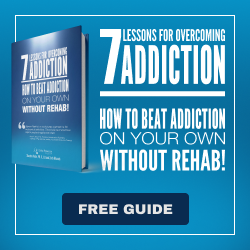Why People Get Better
Novelty-seeking used to make people alcoholic, now it makes them creative.
The large population studies from the National Institute on Alcohol Abuse and Alcoholism (called NLAES and NESARC) that have found three quarters of ever-alcoholic people become stably sober, and a majority of those continue to drink, call for some kind of personality explanation. (A genetic explanation, of course, can’t account for why people achieve remission from alcoholism without abstaining.)
And one is forthcoming. Well, there has really always been one, based on the fact that people sober up—in the sense of settling down into their lives, responsibilities and satisfactions (as I pointed out in my 2004 PT article, “The Surprising Truth About Addiction”)—with age and maturity. This is where the phrase “maturing out” of heroin addiction came from a la the great research of Charles Winick, who first reported the phenomenon in a systematic way among New York City street addicts (an article I unfortunately don’t find on the Internet).*
The explanation comes from the one-time alcoholism researcher, Robert Cloninger, a psychiatrist who has studied the impact of the personality trait novelty-seeking (now called neophilia) on people over their lifetimes, as described by the always-stimulating Times science writer John Tierney.
Initially, it appeared that the trait was implicated in all sorts of anti-social and aggressive behavior, including both criminality and alcoholism. But the perspective on the role of novelty-seeking shifts from a longer vantage point the same way the perspective on addiction shifts from such a viewpoint:
“Novelty-seeking is one of the traits that keeps you healthy and happy and fosters personality growth as you age,” says C. Robert Cloninger, the psychiatrist who developed personality tests for measuring this trait. The problems with novelty-seeking showed up in his early research in the 1990s; the advantages have become apparent after he and his colleagues tested and tracked thousands of people in the United States, Israel and Finland.
“It can lead to antisocial behavior,” he says, “but if you combine this adventurousness and curiosity with persistence and a sense that it’s not all about you, then you get the kind of creativity that benefits society as a whole.”
You mean a given personality trait, with a possibly substantial inherited component, doesn’t doom people to lives of crime, anti-social acting out, and drug and alcohol addiction? No, it doesn’t. And this announcement is doubly ironic since the prestigious journal Science published a highly-touted study claiming a very similar brain-structure-based trait, impulsivity, was an endogenous motive for addiction.
First let’s deal with its heritability:
[G]enes, as usual, are only part of the story. Researchers have found that people’s tendency for novelty-seeking also depends on their upbringing, on the local culture and on their stage of life. By some estimates, the urge for novelty drops by half between the ages of 20 and 60.
But—and here’s the irony—people who maintain their novelty-seeking in maturity move to the front of the class because they become more capable with age, in many instances, of developing purpose and concern for others. Cloninger et al. discovered “the crucial combination of traits in people who flourished over the years—the ones who reported the best health, most friends, fewest emotional problems and greatest satisfaction with life.”
The three traits Cloninger discovered in sucessful people? They “scored high in novelty-seeking as well in persistence and ‘self-transcendence.'” But, then, where does their antisocial novelty-seeking go? Why, it becomes more prosocial, as in creativity, seeking new ways to do things and solve problems (including personal and family ones), as well as generating new opportunities and frontiers in life. The wayward high school and college student may become the middle-aged cosmonaut noted for a readiness to embark on fresh paths.
In other words, a fundamental personality trait—despite persisting throughout people’s lives—is not destiny. It is an engine that people can drive in different directions, and often do, as their outlooks and options in life evolve. Given these perambulations, your outcomes are not predefined and limited.
So, stay tuned, you may find a positive outlet for your tortured yearnings yet. Life is a journey, not a hamster’s ferris wheel.
_________________________
* Charles Winick, 1962, “Maturing Out of Narcotic Addiction,” Bulletin on Narcotics, 14, 1-7.





